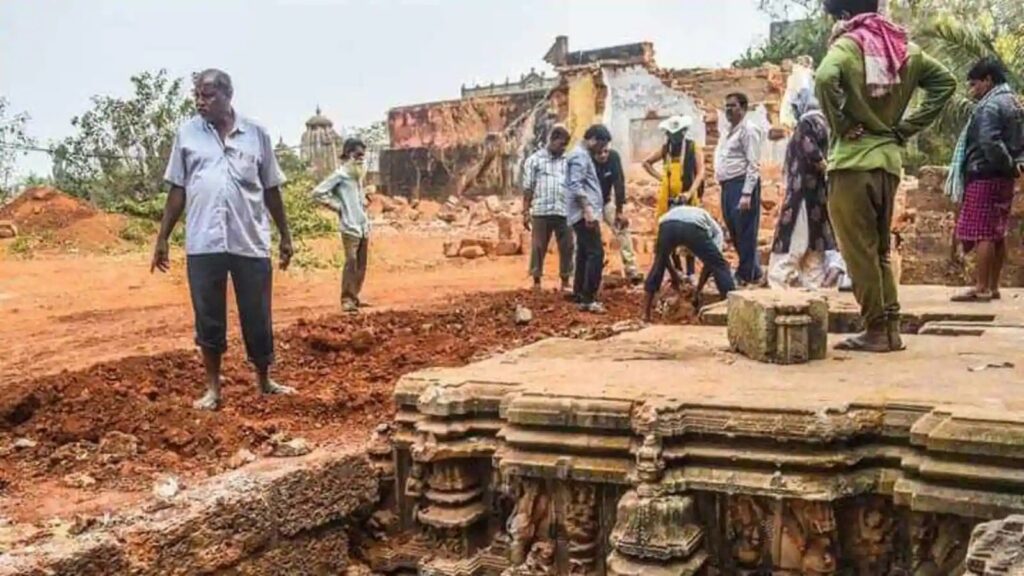Traces of Tenth-Century Temple Unearthed in Eastern India
The Hindustan Times reports that researchers led by Arun Malik of the Archaeological Survey of India uncovered traces of a building thought to be a tenth-century temple while excavating an area next to the eleventh-century Suka-Sari temple complex, which is located near eastern India’s city of Bhubaneswar.
ASI officials said while carrying out scientific cleaning of the two-acre land adjacent to the 11th-century Suka-Sari temple complex, they found the floor of the temple as well as a portion of wall containing beautifully engraved statues of danseuses of the temple that was earlier buried under the campus of a demolished Sanskrit college in Bhubaneswar.
“We think the temple was built on the Panchayatana model like the Brahmeshwara and Chitrakarini temples which are of the 10th-century origin.

Another side of the wall is being dug out and it will require 10 more days to completely bring out the structures,” said Arun Mallick, superintendent of ASI’s Bhubaneswar circle.
Mallick said many ancient structures around the vicinity of Lingaraj temple are believed to have been damaged during the demolition drive carried out by the Odisha government for renovation of the old town area under Ekamra Kshetra Project.
“Bhubaneswar is said to be the city of more than 1000 temples. We believe many structures have been demolished during the current demolition exercise.
We tried to reason with them about not carrying out indiscriminate demolition. But the state government did not take note of our protests,” he said.
Among the heritage structures demolished around the Lingaraj temple is the 11th century Ganesh temple called Budha Ganesh on the northern side of Lingaraj complex.
It has been listed as a protected monument years ago and is one of the smallest Ganesh temples of Bhubaneswar.
The oldest structure in Bhubaneswar is Baitala temple, that is believed to have been built during the 8th century by the Bhaumakara kings.





